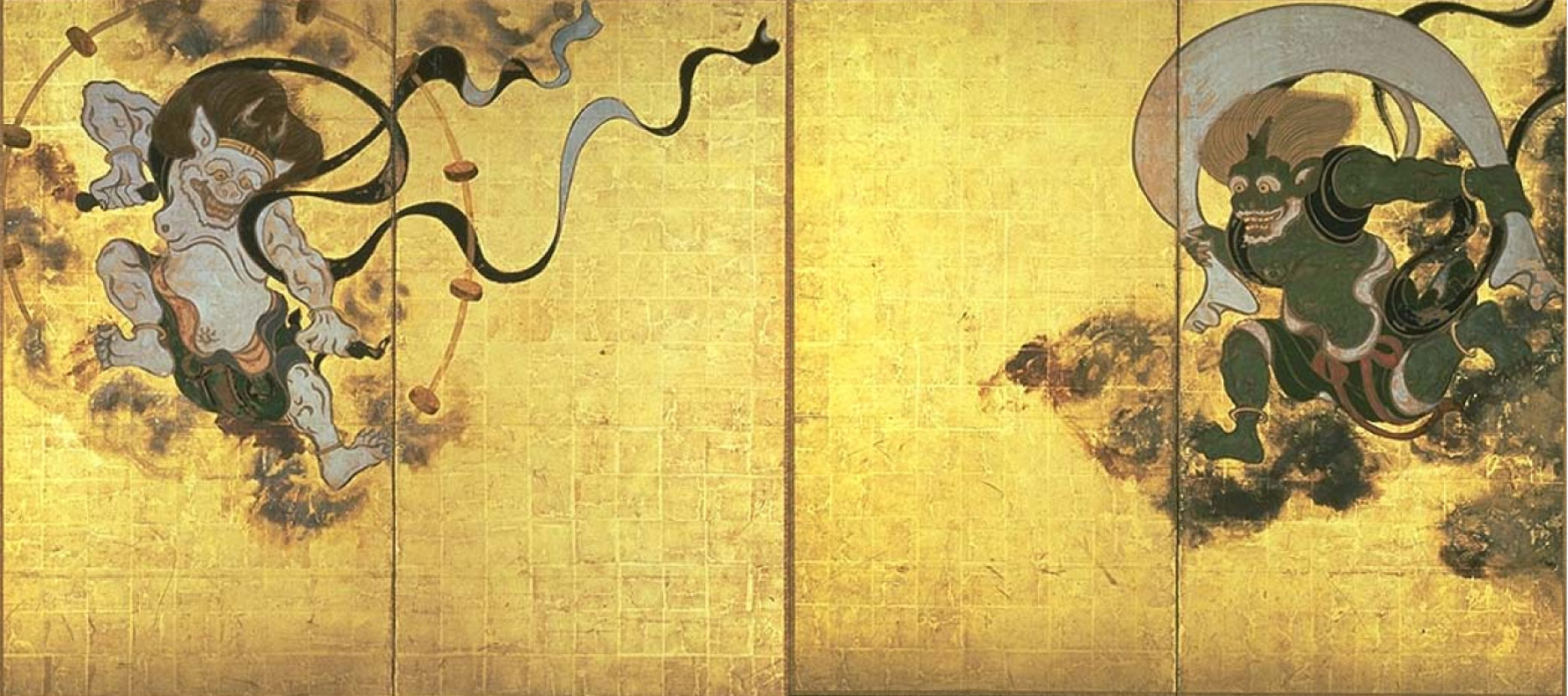 |
| VERY Famous pair of screen paintings by Sotatsu. Reproductions are on permanent display at Kennin-ji in Kyoto. |
Another teacher then asked me whether I'm "conscious of that mismatch between the Japanese and Australian". Yes, of course and I feel like I still haven't managed to tread that fine line with sufficient finesse. Perhaps my artwork still does look too Japanese.
But let's think about what that means; to "look Japanese". Maybe my compositions or colours are heavily influenced by Japanese painters. But isn't any artist inspired by someone, or by some art that came before he did? It just happens to be that what I am inspired by is "outside my own culture" or has a history attached that was borne in another country. I'm not trying to appropriate or parody Japanese paintings or Japanese traditions, rather I am impressed and moved by them. So perhaps the questions should be more about where the line is between Parody and Homage.
It comes back to the very crux of what is "creation". All we are ever doing is recycling. Grabbing all those little skerricks of things we love, things that excite us, things that make us go "ohhhh" and bundling them up together cleverly and beautifully in a way that becomes us.
Where we grab those strands of inspiration from will influence the whole but the sum of them will be unique.
I can be influenced by Japanese painting or scrolls or Abstract Impressionism but if I am a talented artist, if I am engaging in creation, then the artwork that I create won't be an imitation of those or a parody but rather an artwork that rings of a certain taste, certain familiar qualities, certain influences that are important but not all-defining.
I happen to love art that makes you look twice because it's a special play on imagery or tradition. How about this list for starters? Australian Danie Mellor, Ceramicist Ah Xian, Sculptor Ricky Swallow, Painter Yamaguchi Akira,
Yokohama-e Prints from the 1860's, Edo-era Bird scrolls, Japanese painter Takeuchi Seiho.......
 |
| Quirky scrolls depicting imported bird species from the early 1800's |
These are artworks and artists inspired by tradition, inspired by certain tastes or cultures but they turn those influences into something else entirely.
In my own work, I feel the same push and pull. The technique gives the work a certain look, and I push it towards something else; as a result it can be neither here nor there. And why not be both? If we did the same thing as everyone else, we could expect the same results, and we know from the definition of "creation" that every recycling produces a new combination.
I have now officially spent half of my art education in Australia and half in Japan so the images and artworks that I've been exposed to are from both backgrounds. Perhaps if I was doing katazome purely within an Australian art school, my work would tend more towards design or abstraction or experimental textiles. But with the things around me like Nihonga (Japanese painting) and contemporary pictorial textiles, this is what I have gravitated towards. Also I'm really interested in the ideas behind Japanese painting about compositions and seasonal imagery and flow, it's not purely just that those paintings are around.
Instead of feeling odd or uneasy about the mismatched things and the spaces between, why don't we celebrate them?




No comments:
Post a Comment